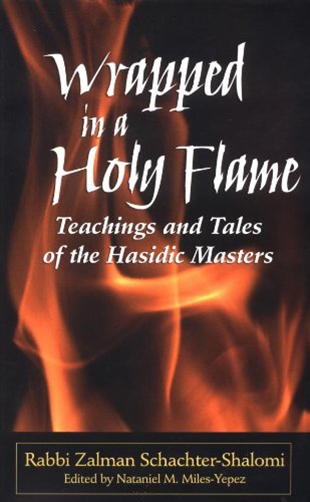Martin Buber brought us a keen sense of the spiritual creativity, devotional intensity, and mystical enthusiasm of the Hasidic movement which spread through Eastern Europe starting in the 18th century. It was launched by the inimitable Ba'al Shem Tov (1698-1760) who saw the world filled with signs of God's presence and proclaimed a path of piety and joy. Many masters followed in his train, and new and varying spiritual emphases flowing from them. In this salutary resource, Rabbi Zalman Schachter-Shalomi presents new translations and deft descriptions of the teachings of these Hasidic masters from Europe and America.
The vast material in this book had its genesis in lectures given by the author during 1998 when he was teaching at Naropa University. Before that Schachter-Shalomi was professor of Jewish mysticism and psychology of religion at Temple University until his retirement in 1987. All those familiar with this pioneering father of the Jewish Renewal movement will savor the intimations in the text of Schachter-Shalomi's vast imagination and his love of story-telling.
An early example of his distinctive touch comes in the instructions he gives for using the book: "So before you study this material, try meditating or singing a niggun as preparation. Then, when you have created the proper 'space,' read the selected teaching aloud. It doesn't work well to do it silently. These teachings were originally given orally, and when they are studied out of books, they are studied out loud. You may find it agreeable to study your teaching with a partner. Every once in a while, you may find that you have to put the book down and go over the material you have just read with the tendrils of your mind. Try to get a feel for doing this."
Schachter-Shalomi revels in the different spiritual gifts of the Hasidic masters — the joy of the Ba'al Shem Tov, the psychological acuity of Maggid of Mezritch, the wisdom of Reb Shneur Zalman and the contemplative know-how of Reb Dov Baer of Lubavitch. And when he reaches the seven generations of Chand rebbes, he discusses their legacies in terms of soul matters, the duality of good and evil, fear and love, woman and the divine feminine.
Many Hasidic teaching stories deal with the problem of what to make of misfortune. Here is one of them: "Once Rabbi Akiva was riding a donkey and had with him a rooster and he was looking for a place where he could spend the night, Finally, he comes to an inn, but the owners don't want him there. So he has to camp out nearby with his rooster and his donkey. In the night the rooster dies and so does the donkey. And when each died he said, Gamzu l'tovah, "This is also for the good." So now he is alone at night camping out. The next morning he finds out that robbers came in and killed everyone at the inn. If the donkey had brayed, he would have been found and killed. And if the rooster had crowed, he would have been found and killed. So their dying saved him."
Anecdotes abound about these extraordinary spiritual teachers and their impact on others. Here is an example: "One Saturday, Reb Shlomo was walking up Broadway, and a young man came up to him and said, 'Give me your money!' Reb Shlomo turned to him and said ,'Brother, it's Shabbos today. I don't have any money on me. But if I see you during the week, I'll give you five, OK?' And the man let him go. And during the following week, he actually saw the man who tried to stick him up and called, 'Hey, brother!' and ran after him. And the guy ran probably figuring that Shlomo wants to get even with him or something, but Shlomo caught up with him and with hand outstretched said, 'Here's the five that I promised you.' He had a really beautiful sense of compassion."
This expansive volume does a good job demonstrating the riches of the teachings and tales of the Hasidic masters.
